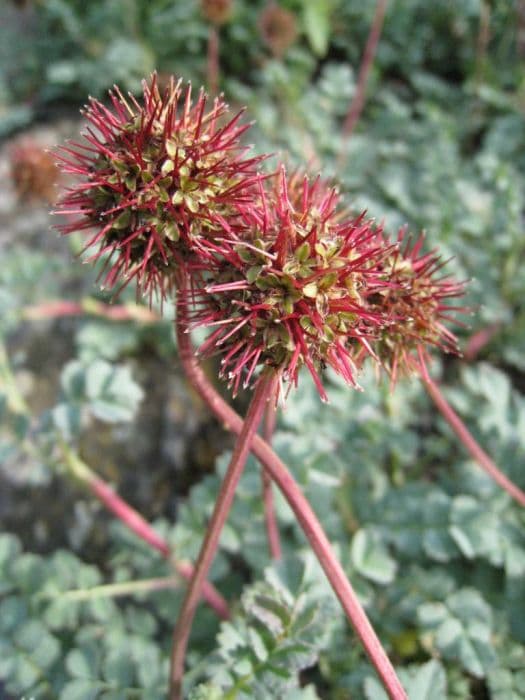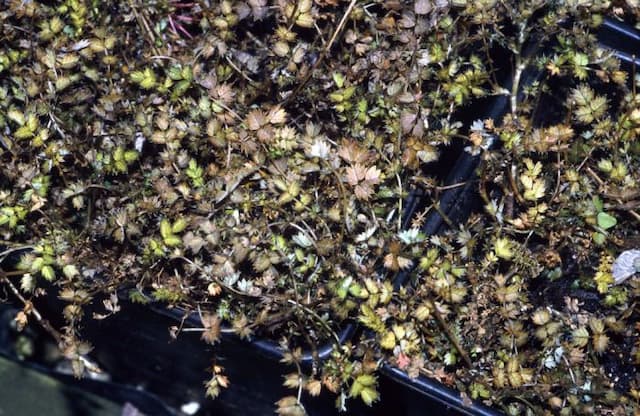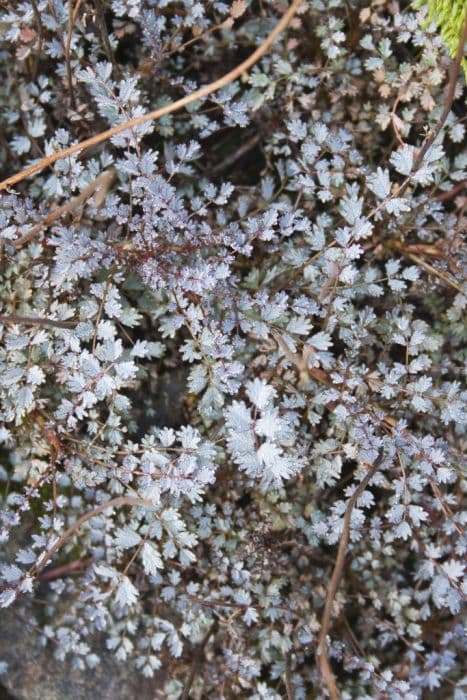Munstead Wood Rose Rosa Munstead Wood = 'Ausbernard' (PBR) (S)
![rose [Munstead Wood]](/_next/image?url=https%3A%2F%2Fplants-admin.emdemapps.com%2Fimages%2Fplants%2F%2Fimages%2F604b64571ad1f.png&w=3840&q=75)
ABOUT
The Munstead Wood rose is a striking variety with lush, deeply cupped flowers that exude a rich, velvety quality. Its petals boast an intense, dark crimson color that occasionally seems to be almost black, especially at the base, which provides a stunning contrast to the lighter tones at the edges. The blooms are quite full and densely layered, which adds to their opulent and luxurious appearance. As the flowers mature, they gradually open up to reveal a delightful, somewhat lighter-colored center, emitting a strong and captivating fragrance that combines traditional rose aromas with hints of blackberry, blueberry, and plum. The plant's foliage is also noteworthy, with a generous covering of dark green leaves that offer a lovely backdrop to the dramatic flowers.
About this plant
 Names
NamesFamily
Rosaceae
Synonyms
Munstead Wood Rose, English Rose Munstead Wood
Common names
Rosa 'Ausbernard'
 Toxicity
ToxicityTo humans
The common name of Rosa Munstead Wood = 'Ausbernard' (PBR) (S) is Rose. Roses are not considered toxic to humans. They are commonly grown in gardens for their beauty and fragrance. However, ingesting large quantities of the rose hips (the fruit of the rose plant) may potentially cause stomach upset due to the presence of Vitamin C and other compounds in high amounts. It is also worth noting that the thorns of rose plants can cause physical injury if handled carelessly.
To pets
Rose is the common name of Rosa Munstead Wood = 'Ausbernard' (PBR) (S). Roses are generally considered non-toxic to pets such as dogs and cats. However, ingesting the plant material can potentially lead to minor gastrointestinal upset due to the fibrous nature of the plant material. Again, the thorns of the plant pose a risk for physical injury, and pets can harm themselves if they attempt to chew on or swallow thorny stems. It is always advisable to supervise pets in the garden and discourage them from chewing on ornamental plants.
 Characteristics
CharacteristicsLife cycle
Perennials
Foliage type
Deciduous
Color of leaves
Green
Flower color
Crimson
Height
3 feet (0.91 meters)
Spread
2.5 feet (0.76 meters)
Plant type
Shrub
Hardiness zones
5
Native area
Cultivar
Benefits
 General Benefits
General Benefits- Attractive Blossoms: Munstead Wood Rose is known for its deep crimson flowers which can add a splash of color to any garden.
- Pleasant Fragrance: The blooms emit a strong old rose fragrance with hints of blackberry, providing sensory pleasure.
- Repeat Flowering: This variety is a repeat-flowering rose, ensuring multiple displays of beauty throughout the growing season.
- Disease Resistance: Bred for improved resistance to common rose diseases such as rust and black spot.
- Hardiness: It's a robust plant, capable of withstanding various climates and weather conditions within its recommended growing zones.
- Versatility: Can be used in a variety of garden settings, including borders, rose beds, and as a single specimen.
- Compact Growth: This rose's manageable size makes it ideal for smaller gardens or growing in containers for patios and terraces.
 Medical Properties
Medical PropertiesThis plant is not used for medical purposes.
 Air-purifying Qualities
Air-purifying QualitiesThis plant is not specifically known for air purifying qualities.
 Other Uses
Other Uses- Rose petals can be used to make natural dyes for fabrics, offering hues from soft pinks to rich purples depending on the concentration and fabric treatment.
- Rose hips, the fruit of the rose plant, can be transformed into beads and used in jewelry-making after being dried and hollowed out.
- Dried rose petals can add fragrance and decoration to homemade soaps, giving a gentle exfoliation property and a classic floral scent.
- Petal confetti made from roses is biodegradable and often used at weddings as a more environmentally friendly option to conventional confetti.
- Roses can be processed into a natural scented ink for writing and artwork, capturing the essence of the rose's fragrance in the medium.
- A potpourri can be crafted from dried rose petals and leaves, providing a long-lasting natural scent for wardrobes, drawers, or living spaces.
- The rose's woody stems, when pruned and dried, can be whittled or carved into small decorative objects or even used as kindling for fires due to their pleasant aroma when burned.
- Rose water made from the petals can be used as a flavoring in cooking and baking, imparting a subtle floral taste to dishes.
- Edible rose petals can be used as a delicate garnish on desserts and cocktails, adding both beauty and a hint of flavor.
- Dried roses can be incorporated into wreaths and garlands to create lasting decorative home accents.
Interesting Facts
 Feng Shui
Feng ShuiThe rose, which Rosa Munstead Wood is a variety of, can be used in Feng Shui to promote love and healing. Its lush red blooms are symbolic of love and passion, which can enhance the romance and relationship area of a garden or home. Placing roses in the southwest sector of a garden, living area, or bedroom can strengthen love and marital happiness.
 Zodiac Sign Compitability
Zodiac Sign CompitabilityThe rose is not used in astrology practice.
 Plant Symbolism
Plant Symbolism- Love: The rose, widely recognized as a symbol for love and affection, often represents deep emotion and romantic love.
- Beauty: Roses are synonymous with beauty due to their captivating and elegant form, making them a symbol of aesthetic charm and grace.
- Honor: In historical contexts, roses have been used to symbolize honor and reverence, perhaps due to their association with the divine and the sacred.
- Devotion: The enduring nature of the rose, particularly red roses, signifies deep and lasting devotion between individuals.
- Secrets: With a tradition of being used to mark the confidentiality of conversations, the term "sub rosa" connects the flower with the concept of keeping secrets.
- Balance: The beauty of the rose brings together sharp thorns and soft petals, showing a harmony of soft and harsh, which can symbolize balance in life.
- Passion: Aside from love, roses, especially deep red ones, can also represent strong passion and intense emotional desire.
 Water
WaterThe English Rose 'Munstead Wood' should be watered deeply once a week, providing about 1-2 gallons of water for each plant. The soil should be allowed to dry out slightly between waterings to prevent root rot. During the hot summer months or in dry climates, frequency may need to increase to twice weekly. Ensure that the water is directed at the base of the plant rather than the foliage to reduce the risk of disease. In winter or during periods of heavy rainfall, you can reduce watering as the plant will require less moisture.
 Light
LightEnglish Roses like 'Munstead Wood' thrive best in full sunlight, with at least 6 to 8 hours of direct sun each day. They should be placed in a spot that receives morning sun which is gentler and can help dry dew quickly, reducing the risk of disease. Avoiding overly shaded areas is crucial for the health and blooming potential of the rose.
 Temperature
TemperatureThe 'Munstead Wood' English Rose can survive in a range of temperatures, generally from 20°F to 90°F. The ideal growing temperatures are between 65°F and 75°F. Extreme cold or heat can be stressful for the plant, so it's important to provide some protection, especially in winter if temperatures approach the lower end of the survival range.
 Pruning
PruningPruning the 'Munstead Wood' English Rose is critical to maintain shape, remove dead wood, and encourage flowering. It is best pruned in late winter or early spring, cutting back by about one-third to one-half of the previous year's growth. Prune out any crossing or rubbing branches and open up the center of the plant to increase air circulation.
 Cleaning
CleaningAs needed
 Soil
SoilThe best soil mix for the Munstead Wood rose should be fertile, well-draining loam with a pH between 6.5 and 7.0. Incorporate compost and aged manure into the planting hole, and mulch annually with organic matter to maintain soil health and structure.
 Repotting
RepottingMunstead Wood roses, being garden roses, are not commonly repotted. They are usually planted in the ground where they don't need repotting. In containers, repot them every two to three years, or when rootbound.
 Humidity & Misting
Humidity & MistingMunstead Wood roses thrive at average outdoor humidity levels. As long as the rose is planted in an open area with good air circulation, the ambient humidity should not be a concern.
 Suitable locations
Suitable locationsIndoor
Munstead Wood roses are not ideal for indoor growth; require full sun.
Outdoor
Plant Munstead Wood roses in full sun with well-drained soil.
Hardiness zone
5-9 USDA
 Life cycle
Life cycleThe Munstead Wood rose begins its life cycle when a seed germinates or when a new plant is propagated through cuttings or grafting, establishing a young plant with a root system and shoots. It then enters a vegetative stage where it produces leaves and branches to absorb sunlight and nutrients for growth. When mature enough, it enters the flowering stage typically in late spring or early summer, creating buds that bloom into the characteristic deep velvety crimson roses. After pollination, possibly by insects or the wind, the flowers produce rose hips (fruits), which contain seeds for the next generation. As an individual rose finishes blooming, it enters a period of senescence for that flowering cycle, but being a perennial plant, it will continue to produce new growth and flowers in the following growing season. Finally, when facing adverse conditions or at the end of its lifespan, the plant will die, returning nutrients to the soil and completing its life cycle.
 Propogation
PropogationPropogation time
Early Spring
Propogation: The Rosa 'Munstead Wood' is commonly known as a type of English Rose, and the most popular method of propagation for this plant is by softwood cuttings. This technique involves taking a cutting from the rose plant during the late spring or early summer when the stems are green and flexible. A 5 to 6 inch cutting is taken just below a leaf node, removing leaves from the lower half to expose the nodes. The cut end is then dipped into rooting hormone powder to encourage root growth and planted in a mixture of potting soil and perlite. The cutting should be kept under high humidity and in indirect light until roots have developed, which usually takes between 4 to 8 weeks. Once rooted, the cutting can be transplanted into a larger pot or directly into the garden to grow on and form a new rose bush.









